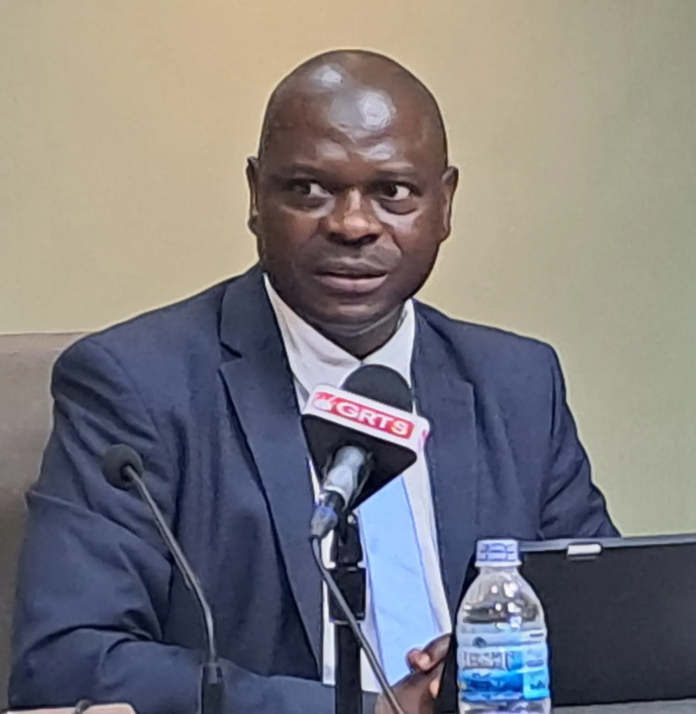According to information provided to media by Finance Minister Seedy Keita, The Gambia’s total debt increased from D46.3 billion in 2016 to D110.6 billion by 2023.
Keita attributed this significant increase to a number of factors, including costlier domestic debt servicing, substantial contingent liabilities from entities like NAWEC and loss-making State Owned Enterprises (SOEs), debt restructuring during the COVID-19 pandemic, dalasi depreciation against major currencies, and new borrowing for ongoing development ventures. The previous administration left behind substantial domestic and foreign debts.
The total debt stock of The Gambia rose from D46.3 billion in 2016 to D110.6 billion in 2023, largely due to the country’s large external and domestic debt that was left over from the previous administration, high contingent liabilities arising mainly from NAWEC and several loss-making State Owned Enterprises (SOEs), debt restructuring during the COVID-19 pandemic, and fresh borrowing to fund ongoing development projects, disclosed the Finance Minister. Keita broke down the numbers and showed that, in 2018, there was D68.9 billion in overall debt, consisting of D32.5 billion in domestic debt and D36.4 billion in foreign debt. With D40.9 billion in global debt and D33.1 billion in domestic debt, the total debt has increased to D73.9 billion by 2019. The debt increased to D78.7 billion in 2020, with D33.1 billion coming from domestic sources and D45.7 billion from outside sources. The overall debt increased to D86.7 billion for the fiscal year 2021, consisting of D50.1 billion in external debt and D36.6 billion in domestic debt. In 2022, the debt totaled D100.6 billion, consisting of D63.2 billion in external debt and D37.4 billion in domestic debt. Ultimately, the total debt reached its highest point in the fiscal year 2023, totaling D68.7 billion in external debt and D42.0 billion in domestic debt.
The amount of domestic debt in the Gambia did not alter significantly from 2018 and 2020. The restructuring of external debt and the depreciation of the Gambian dalasi versus major currencies have resulted in a change in the total stock of state debt. In order to lessen the burden of debt service on the nation, the Gambia obtained promises to restructure its bilateral and multilateral debt after the COVID-19 outbreak, according to Hon. Keita. The Finance Minister emphasised that debt restructuring alleviates the immediate financial strain caused by debt servicing obligations. Hon. Keita went on to say that while payments towards debt principal are deferred, the overall debt stock increases as a result of ongoing external debt disbursements.
“The administration inherited a D10.8 billion overdrawn TMA in 2017.” Then a 30-year non-marketable bond was issued to securitize this. In order to pay debt service on behalf of the national electricity provider, the new government issued a D1.7 billion non-marketable NAWEC bond and signed an MOU in 2018 promising to take on the majority of the company’s debt.
Due to them, the amount of domestic debt climbed from D21.8 billion in 2016 to D32.5 billion in 2018. Similar to this, the new government took over a legacy debt of USD 50. 4 million (around GMD 2.4 billion) from verified debt in infrastructure contracts from the outgoing government. Hon. Keita disclosed that fresh borrowing (projects and new domestic borrowings) totaled D41.9 billion.
The construction of the new Bertil Harding Highway, Phase I of the University of the Gambia (UTG) Faraba Campus, the development and rehabilitation of Banjul International Airport, the construction of the VVIP Lounge at the Banjul International Airport, and the Gamtel Broadband Network Project are among the initiatives for which the recent debts were set aside, according to the Finance Minister.
The Port Expansion Project, the OMVG Interconnection Project, the Gambia Renewable Energy Project, the Banjul Rehabilitation Project, and the Roads Project in the Greater Banjul Area, which includes localities like Kanifing and Brufut, were among the projects that Hon. Keita said were also backed by the new debts. The building of the markets in Basse and Brikama, the Rice Value Chain Development Project, and rural roads like Lamin Koto Passamas, Niumi Hakalang, Sabach Sanjally, and Kiang Basse Yorobowel were also given funding.
“The International Monetary Fund’s Debt Sustainability Analyses (DSAs) affirm that the Gambia’s total debt stock is sustainable but nonetheless at high risk. By the end of 2023, the debt stock will have accounted for 72% of GDP (Gross Domestic Product), disclosed the Finance Minister.


